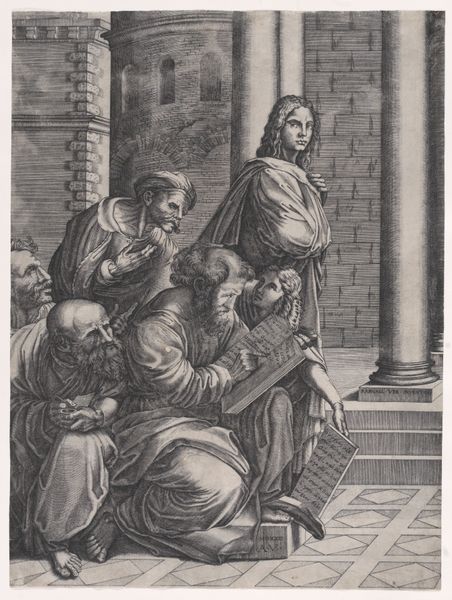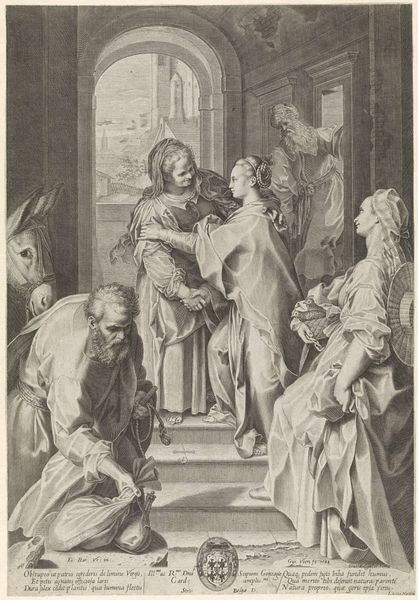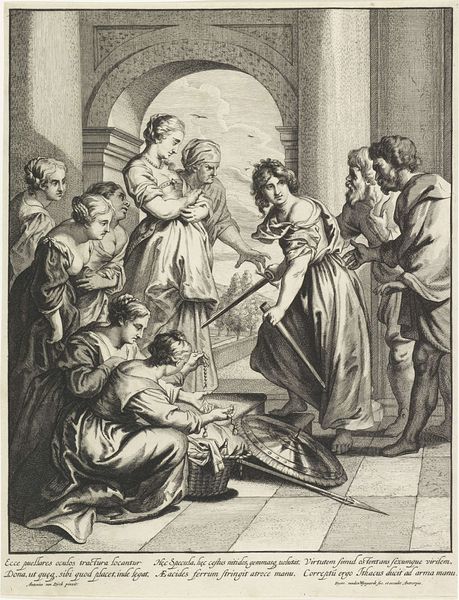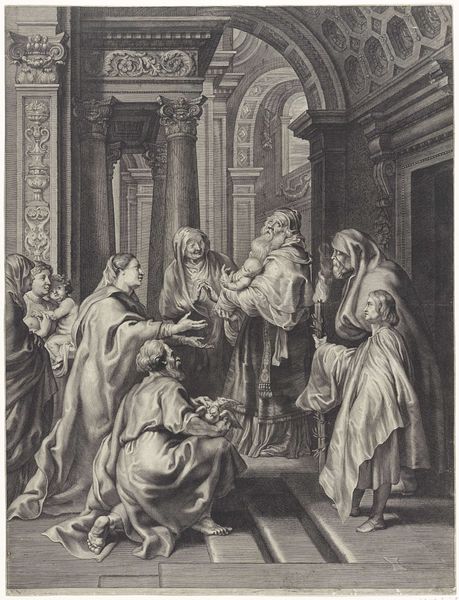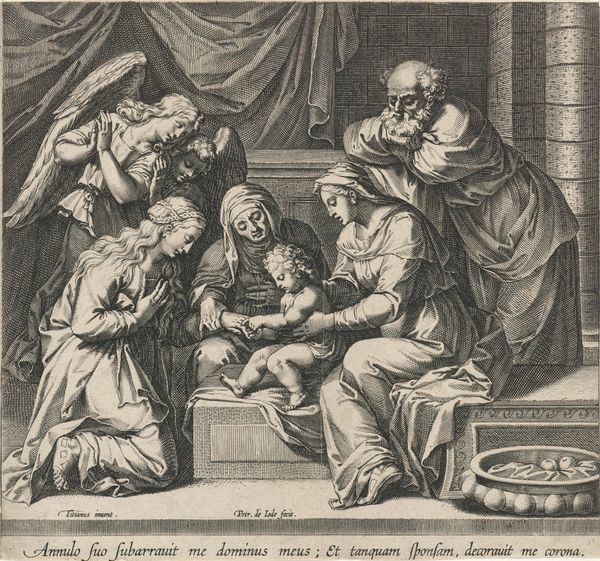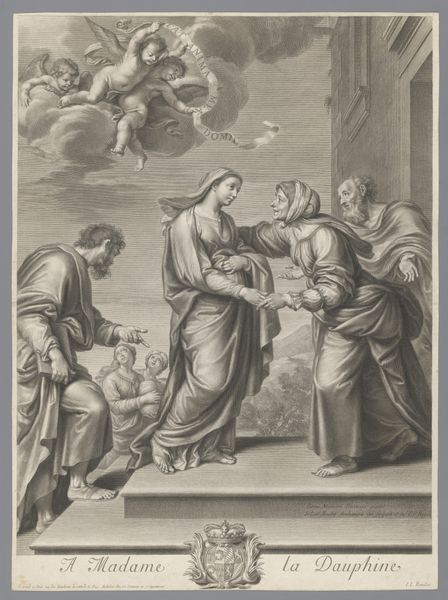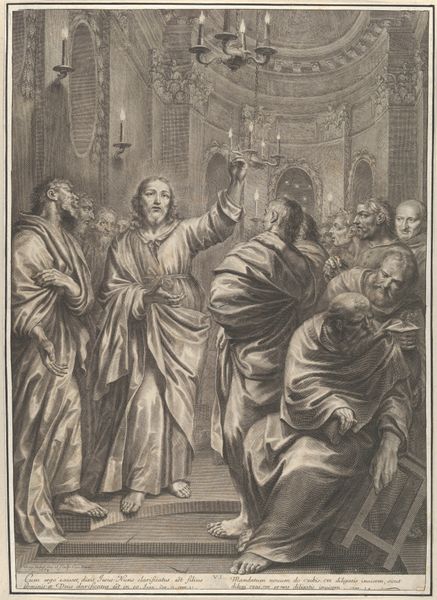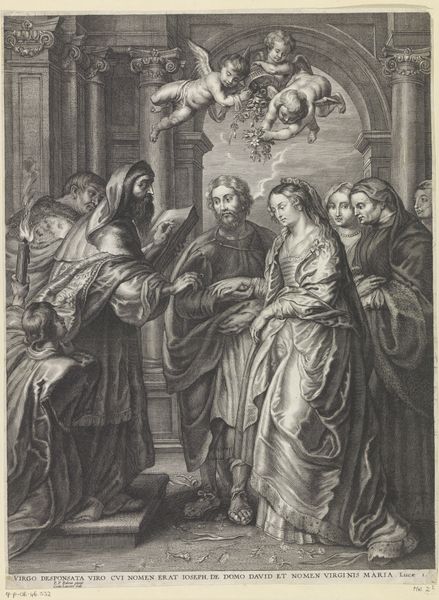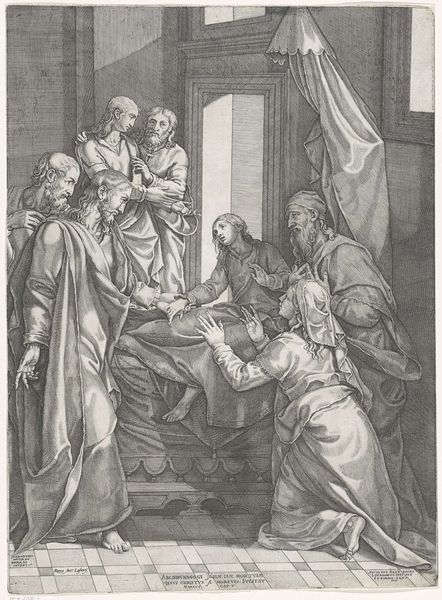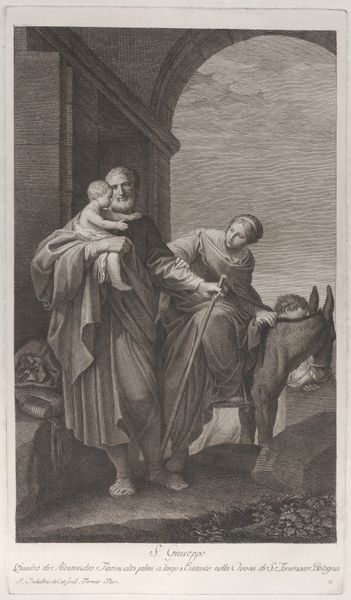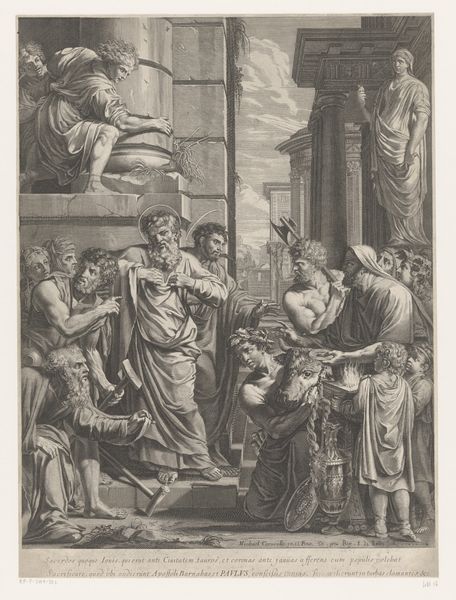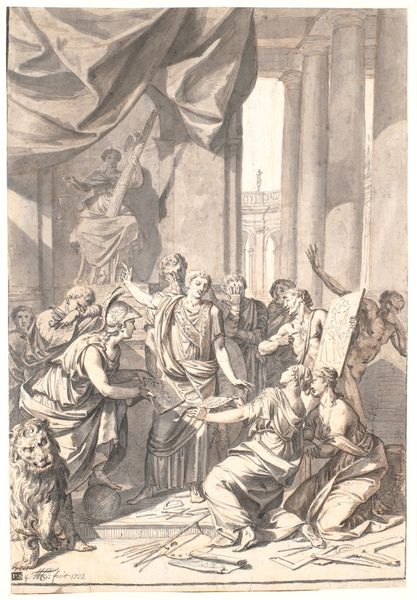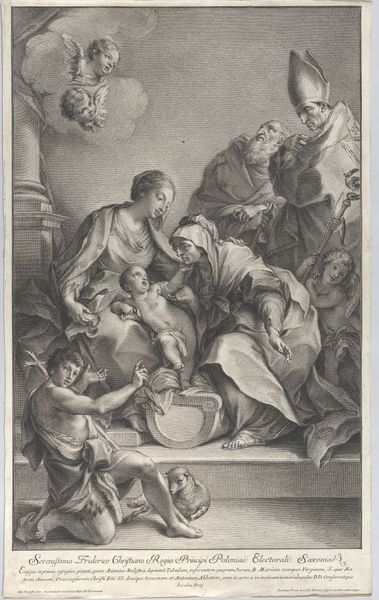
The Visitation, the Virgin and Saint Elizabeth embracing in the center, flanked by other figures, after Barocci 1589
0:00
0:00
Dimensions: Sheet: 9 5/8 in. × 7 in. (24.4 × 17.8 cm)
Copyright: Public Domain
Curator: This print, "The Visitation after Barocci," made in 1589 by Philips Galle, captures a scene of the Virgin Mary visiting Saint Elizabeth. It's striking how the labor of engraving itself impacts our interpretation of the original painting, wouldn't you agree? Editor: Yes, I can see that. I am curious about how exactly its message transforms because of its production methods. What do you see in this piece that particularly resonates within a materialist lens? Curator: Well, look at the dense, almost overwhelming detail. Each line is a physical mark, a testament to the engraver's labor. The printmaking process allowed for wider distribution of Barocci’s imagery. Consider the economic implications of this reproducibility. How did this accessibility change the consumption and understanding of religious art? Editor: I guess it allowed more people access and the creation of copies made it so artists had to explore new ways of innovating, new avenues of expression? Curator: Exactly. The print becomes a commodity, shaped by market forces and the division of labor. Notice how the artist has to rely on printmakers, each playing a role in dissemination and reception. Editor: That’s so interesting, framing the artistic creation itself within networks of labor. Thank you! Curator: And thank you. Analyzing art through a materialist perspective sheds light on the economic and social contexts in which art is produced and consumed, offering deeper insights.
Comments
No comments
Be the first to comment and join the conversation on the ultimate creative platform.

